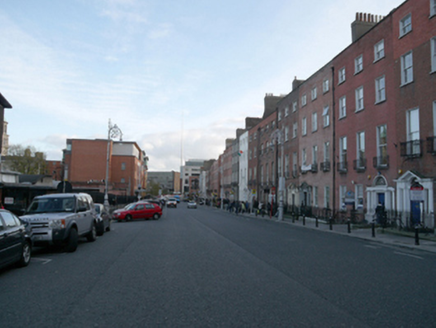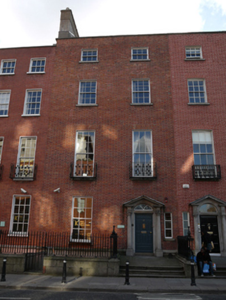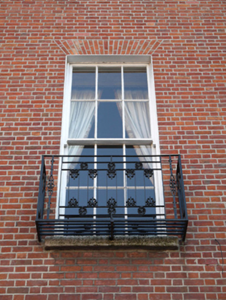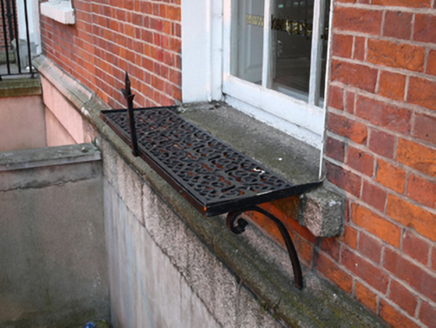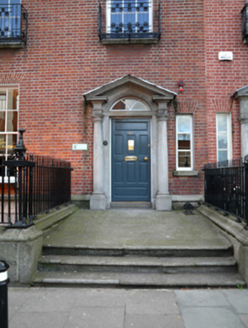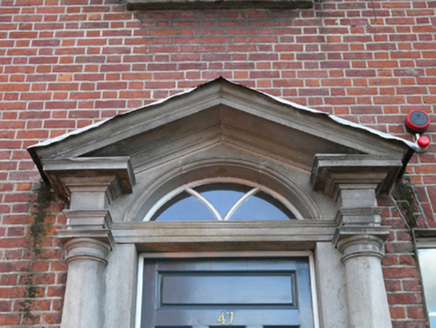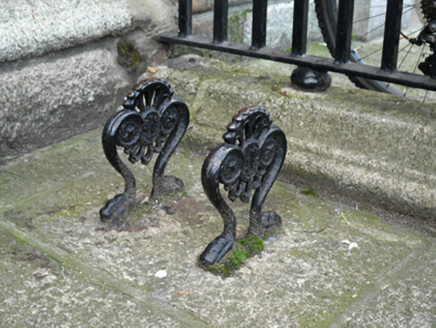Survey Data
Reg No
50010632
Rating
Regional
Categories of Special Interest
Architectural, Artistic
Original Use
House
In Use As
Office
Date
1760 - 1770
Coordinates
315634, 234960
Date Recorded
01/11/2011
Date Updated
--/--/--
Description
Terraced two-bay four-storey house over exposed basement, built c.1765, with full-height rear extension. Now in use as offices and interconnected with No. 48. Single-span slate roof, hipped to north with rebuilt yellow brick chimneystack with clay pots to south party wall. Flat roof to rear extension. Roof hidden behind parapet wall with granite coping. Red brick walls laid in Flemish bond on moulded granite plinth course over cement rendered basement walls. Gauged brick flat-arched window openings with patent rendered reveals, granite sills and replacement timber sliding sash windows, three-over-three pane to top floor and six-over-six pane elsewhere to front facade. Replacement iron balconettes to first floor windows and iron support to ground floor window. Square-headed replacement timber door set within limestone Doric doorcase with plain limestone jambs and lintel cornice, flanked by engaged Doric columns on plinth bases supporting entablature blocks in turn supporting open pediment housing fanlight with Y-tracery. Single slender square-headed fixed paned timber sidelight to north side of doorway. Door opens onto granite platform and three nosed granite steps with decorative cast-iron bootscraper, bridging basement. Platform and basement enclosed by replacement iron railings and corner piers set on raised moulded granite plinth wall with matching gate and steel steps to basement. Five-storey office and apartment development to rear of site accessed from Granby Place.
Appraisal
Laid out by Luke Gardiner in 1753, this house was built by Peter Vavasour. It was restored in the 1990s to a high standard. The building has a very fine Pain-style doorcase and presents an attractive façade to the street on what had been the most neglected side of the square in the twentieth century. The facade, with diminishing windows, retention of timber sash frames and decorative balconettes, is well presented and significantly enhances this side of Parnell Square. Granite steps and the plinth wall to the basement provide good context to the house.
